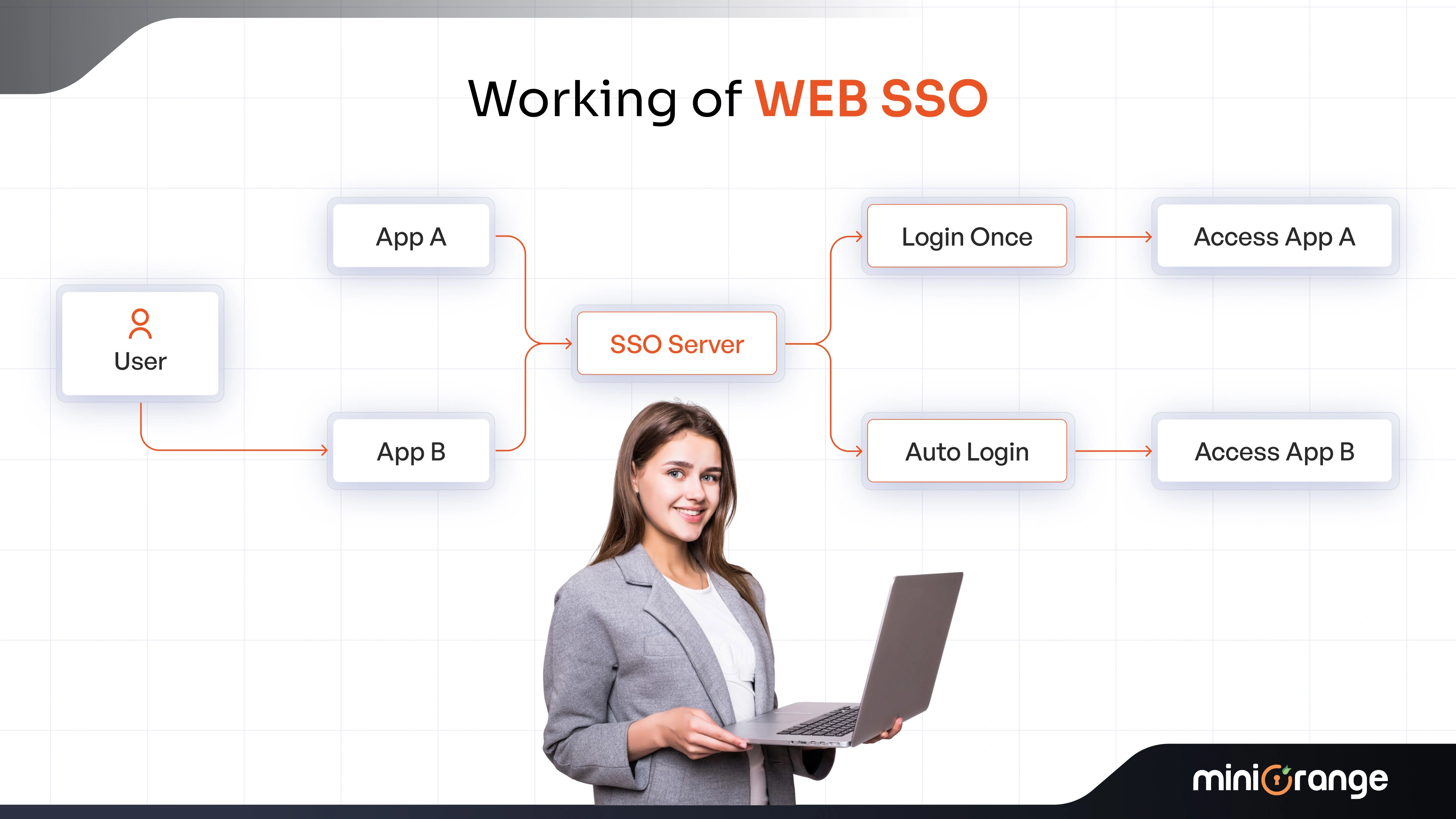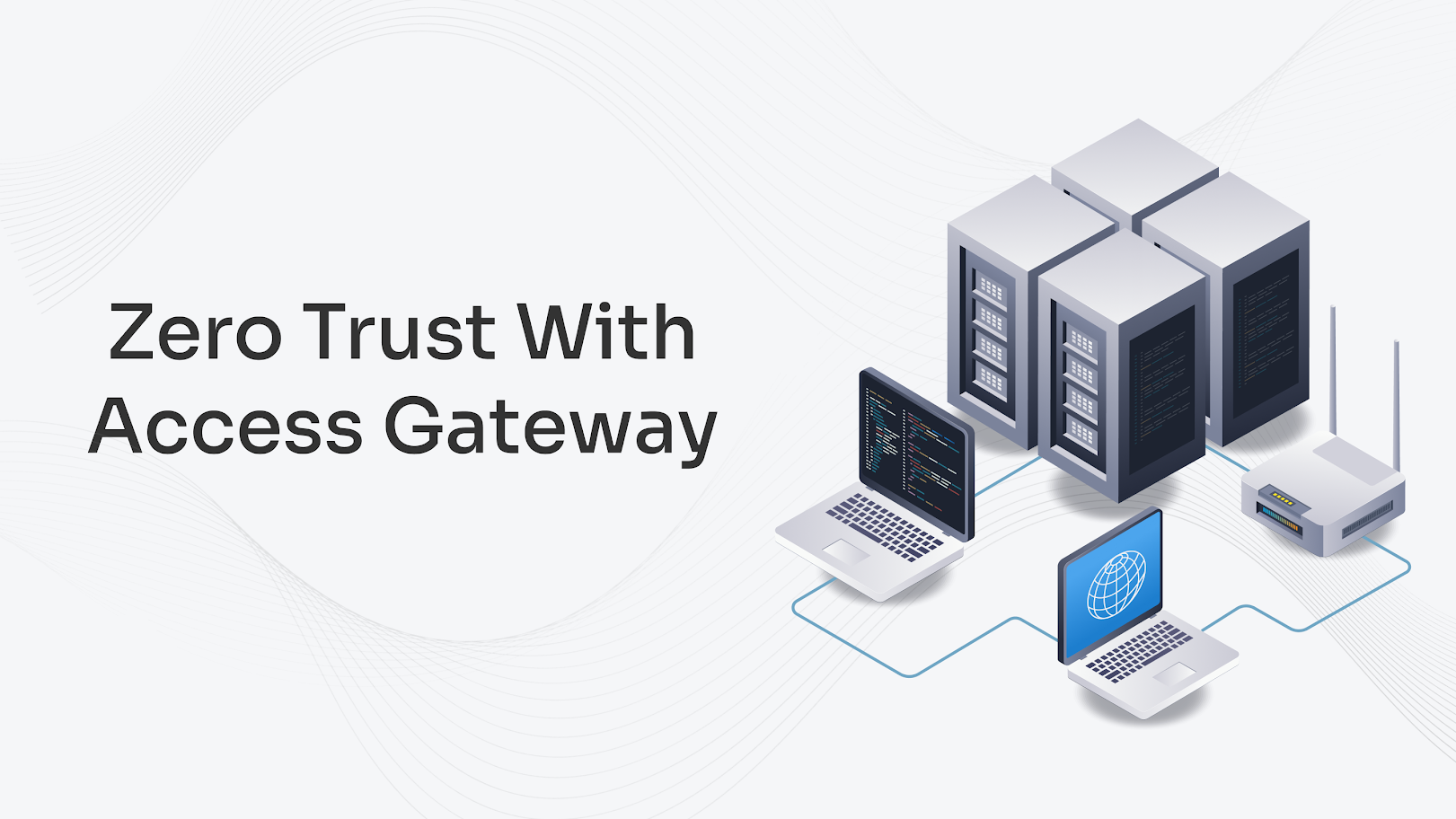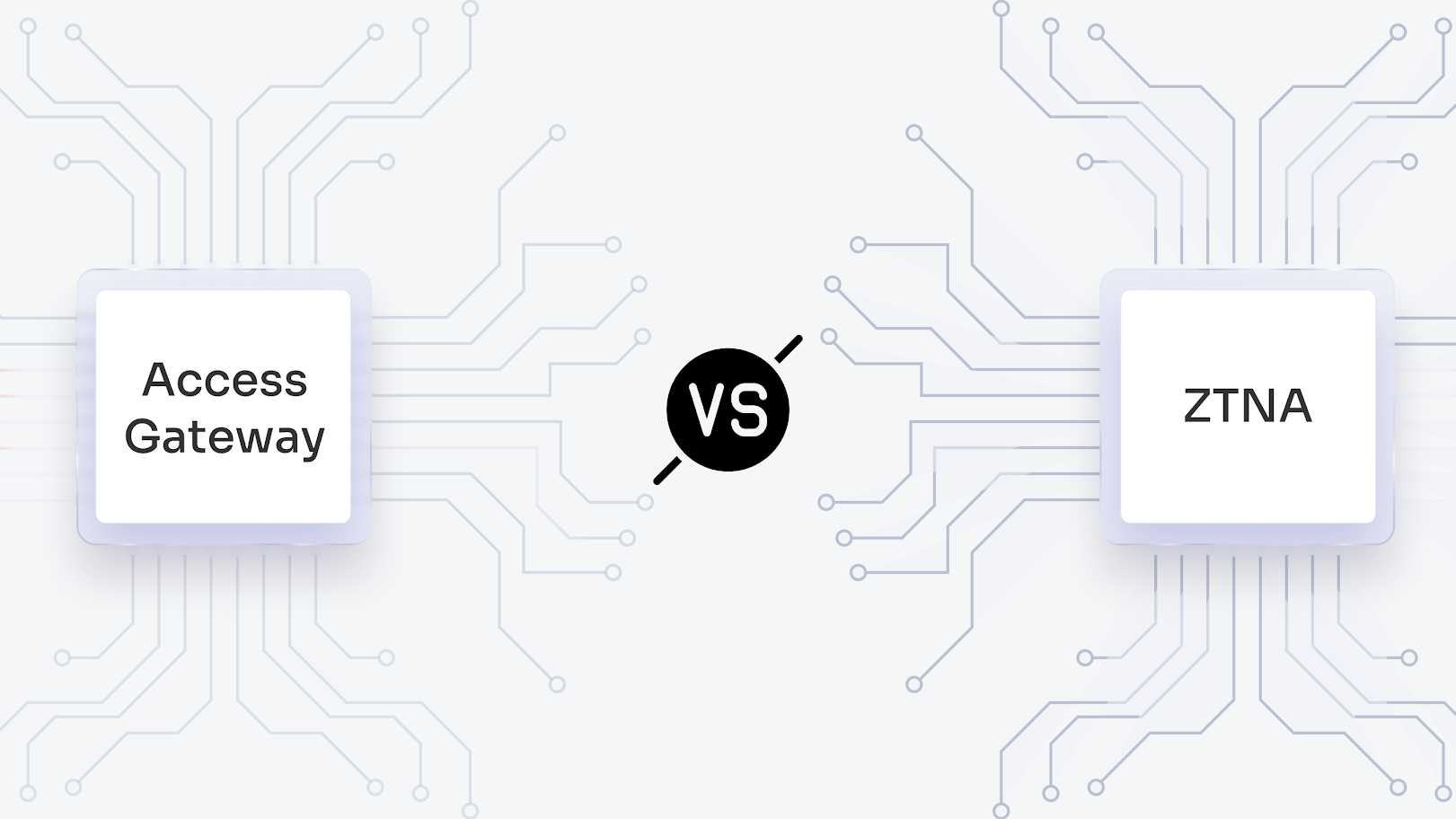Do you ever feel like you have too many passwords to remember? You're not the only one. Almost 61% of professionals say they use the same password for more than one account, which is a bad idea because cyber threats are on the rise.
Web Single Sign-On (Web SSO) removes the hassle of having to remember many passwords with one secure, master key. This makes access easier and lowers the risk. Web-based single sign-on is more than just a handy trick; it's a big change in how modern security works that has saved businesses a lot of time and made them safer. Experts predict that the Web SSO sector will surpass $4.2 billion by 2032, marking a significant milestone.
Learn how single sign-on for web works, from its basic ideas and strong authentication protocols to how it beats traditional password vaulting in security.
Explore how to make federation function well between businesses, deal with real-world implementation problems, and learn how miniOrange web SSO can change the way you operate with actionable data.
What is Web SSO?
With web SSO (Single Sign-On), users only have to log in once to use several different apps. It uses session storage, local storage, and cookies to keep track of browser-based sessions and make sure that users stay logged in to all associated apps. It allows users to proceed with SSO on a group of web servers requiring authentication.
A centralized domain takes care of authentication on demand and lets authorized apps share session data. Users can quickly access other apps after logging in, regardless of platform or domain.
The web SSO makes it much less likely that users will lose their usernames, and it makes it less likely that locked-out customers would have to call the help desk. Users no longer need to remember many usernames and passwords for different types of web servers.
Web SSO makes it easier for users to go to their accounts and makes it easier for the firm by reducing the number of applications that need support.
How Does Web Single Sign-on Work?
Web Single Sign-On (SSO) is a solution that lets people sign in to many apps with just one set of login information. A central SSO server manages all authentication, so you don't have to remember distinct passwords for each app. This makes it easy to use numerous websites and services.

The Initial Login Process
When you attempt to use an app that requires a login, it directs you to the central SSO server. You just need to enter your login and password once here. The SSO server checks your credentials and, if they are correct, creates a secure authentication token.
Then, you are sent back to the original app with this token, which the app checks before letting you in.
Accessing Additional Applications
When you go to more apps, you can really see the potential of SSO. When you go to a new application that supports SSO, it automatically sends you to the same SSO server.
This time, though, the server sees that you are already logged in and sends you back to the new app right away with a new token. You can get in right away without having to input any passwords, which makes it easy to use on many platforms.
How Session Management Works
There are two basic ways that the SSO server keeps your login session going. Cookies in your browser track your session so the server can remember if you're logged in while switching apps.
Authentication tokens are safe passes that apps use to check your identification. This way, each app can trust that you are who you say you are without having to handle your real credentials.
Security and Protection Features
SSO systems use several levels of protection to keep user accounts and data safe. Authentication tokens are only useful for a short time to lower the risk of security breaches. To stop interception, all communications between your browser, the SSO server, and applications use encrypted connections.
The system also has an automated logout feature that stops sessions when a set amount of time has passed without any activity. Most crucially, the SSO server and all the apps that use it have safe trust relationships, which means that only apps that are allowed to can ask for authentication.
SSO is quite helpful for both individuals and businesses. Users appreciate that they only need to remember one set of login information to access multiple apps. This cuts down on password fatigue and the urge to use weak passwords again.
Centralized security management is beneficial for businesses because it lets them use the same authentication rules for all of their apps and immediately cancel access when necessary.
Password Vaulting vs. Web SSO
A web SSO is not the same as a safe vault that holds many credentials for different online services. Password vaulting protects many passwords by utilizing just one account and password.
But every time someone uses a new internet service, they have to sign in to it. Even if the password vault fills out the form fields for you, you still need to sign in.
After a person has been verified by web SSO authentication, they don't have to sign in to any web services that use that approach again. This is an example of a "sign in once/use all" authentication method.
Web SSO Implementation
Authentication Protocols Compared (SAML, OAuth2, OIDC, WSFed)
To pick the best web SSO solution for your business, you need to know the details of authentication protocols. A short comparison between SAML, OAuth2, OIDC, and WS-Fed is below:
| Protocol | Primary use | Token/Format | Strengths | Considerations |
|---|---|---|---|---|
| SAML | Enterprise SSO and federated identity | XML-based assertions | Robust, widely adopted, and highly secure | Complex implementation and heavier payload formats |
| OAuth2 | Authorization (delegation access) | Access tokens (Bearer tokens) | Flexible, versatile, and supports multiple flows | Not originally designed for authentication, may need extensions |
| OIDC | SSO authentication built on OAuth2 | JSON Web Tokens (JWT) | Modern, lightweight, developer-friendly, and scalable | Relatively new compared to SAML and evolving standards |
| WSFed | Federated identity in the Microsoft ecosystem | SAML-like tokens (WS-standards) | Seamless integration with Active Directory and Microsoft Tech | Limited flexibility outside of Windows-centric environments |
Federation Across Organizations (SCIM & Cross-Boundary SSO)
Federation between different organizations is a big change in how modern Web SSO works. Companies may have both agility and strong security by using standards like SCIM for seamless identity provisioning and cross-boundary SSO for secure authentication across domains.
- SCIM Standardization: This makes it easier to add and remove users and makes sure that identity data flows smoothly between systems.
- Cross-Boundary SSO: This lets people securely access different organizational domains by easily linking different identity systems.
- Unified Identity Management: This combines several identity providers, making administration easier while enforcing the same security rules for everyone.
- Improved Security and Compliance: Standardized identity methods help keep strict security protocols and ensure compliance with all rules.
- Easier User Experience: It makes logging in easier and cuts down on IT costs, giving users quick and simple access.
Organizations create a secure, scalable digital environment by combining SCIM and cross-boundary SSO. This federation method not only makes managing identities easier, but it also makes the business infrastructure more efficient and flexible.
Challenges in Web SSO Implementation
Implementing web SSO is a complicated process that requires both strategic planning and technological expertise. To make digital access safer and easier, you have to solve a lot of integration problems.
- Legacy Integration: Combining older systems with newer SSO architectures can make it hard to connect.
- Different Authentication Protocols: To make different protocols work together, you need flexible, strong technical solutions.
- User Adoption: It's important to make the experience smooth and easy to use without sacrificing security.
- Federation Complexities: Different compliance and security standards make it challenging to maintain identities across organizations.
- Risk Mitigation: To find and remedy weaknesses, you need to keep testing and watching.
- Regulatory Compliance: Following different laws and industry norms makes things even more complicated.
These problems show how important it is to take a deliberate, step-by-step approach to implementing web SSO. You can make the digital world safe and efficient by combining technological know-how with strategic planning.
Why Is Web SSO Essential for Your Business?
Web SSO is important for your business because it safely stores client information and login information in one place, making it easier for people to access while also making the whole system more secure. If you don't have it, consumers will have to go through annoying multilogin processes that might hurt your brand and waste IT resources.
- Increases IT Productivity: By giving users a single point of access, it cuts down on support calls and password problems, which gives your IT team more time.
- Improving the Customer Experience: By making sign-ins faster and saving customers 10–15 seconds per login, they can enjoy a seamless, trouble-free digital experience.
- Reduces Security Risks: It gives you a strong, single credential that works on all devices and browsers, which makes it less likely that someone would hack into your account.
- Strengthens Security Capabilities: Promotes the adoption of stronger master passwords, which limit bad password habits and lower the chance of theft.
- Works with Risk-Based Authentication (RBA): Adds an extra layer of security by keeping an eye on how users act and asking for further proof when necessary.
- Unifies the Digital Experience: Unifies access across different apps, which makes customers happier and leads to more sales.
Web SSO not only strengthens your digital infrastructure, but it also greatly improves the user experience. Accepting it means setting your firm up for long-term efficiency, better security, and more devoted customers.
Modern Web SSO Use Cases
There are many reasons why people utilize web app SSO:
- Small businesses that employ a lot of different online apps.
- Midsized and large companies that utilized web app SSO found it to be more beneficial when it functioned as a standalone solution in their IT environment.
- Companies that already have Active Directory (AD) set up.
- Businesses that want to use an IAM strategy.
- Companies that don't know about the new cloud-based solution for AD and web app SSO, which is a much smoother, cheaper, and more integrated platform.
Getting Started with miniOrange Web SSO
Getting started with miniOrange web SSO is the first step toward better security and easier operations. This solution is meant to make your organizing process easier by giving you expert implementation advice and best practices that have worked in the past.
- Quick Onboarding: With a miniOrange Free Account, you can start using all of the services for free for 30 days and get help 24 hours a day, seven days a week.
- Easy Implementation: Use simple steps and expert best practices to add Web SSO to your current systems.
- Strong fallback plans: Make use of complete fallback plans to make sure you always have access and better security.
- Immediate Impact: Utilize a modern, secure IAM solution that changes how you utilize the system and makes your work more efficient.
Use miniOrange web SSO to make sure your digital infrastructure is ready for the future. You can also try it out risk-free to see how simple and safe access can open up new possibilities. Get your business to the next level now with a solution that really works as hard as you do.
FAQs
What is web SSO?
Web Single Sign-On (Web SSO) is an authentication system that enables users to log in to many web-based apps or sites with just one set of credentials. Once users check in to the SSO service, they can access all of the related online services without having to log in again for each one.
For instance, if you check into a Google account, you can use Gmail, Google Drive, and other Google services without having to log in again.
What is the difference between Web SSO and federated SSO?
Web SO allows users to access multiple applications within the same organization or domain using one set of credentials. In contrast, federated SSO enables users to use a single set of credentials to access applications across different organizations or domains.
Federated SSO relies on trust relationships and standards like SAML, OAuth, or OpenID Connect to allow seamless authentication between independent systems.
What is SSO-based authentication?
With SSO-based authentication, a user only has to log in once with one set of credentials to use many different apps or services without having to log in for each one. The SSO system takes care of the authentication and safely sends the user's identity to other apps that are connected.
What is the difference between Web SSO and enterprise SSO?
Web SSO is for apps that run in the cloud and are accessed through a browser. Enterprise SSO is for older or on-premise systems that typically need desktop software for programs that don't run on the web. Enterprise SSO also makes it easier to log in to a wide range of IT systems by centralizing credential management for both new web services and older internal systems.
miniOrange
Author




Leave a Comment